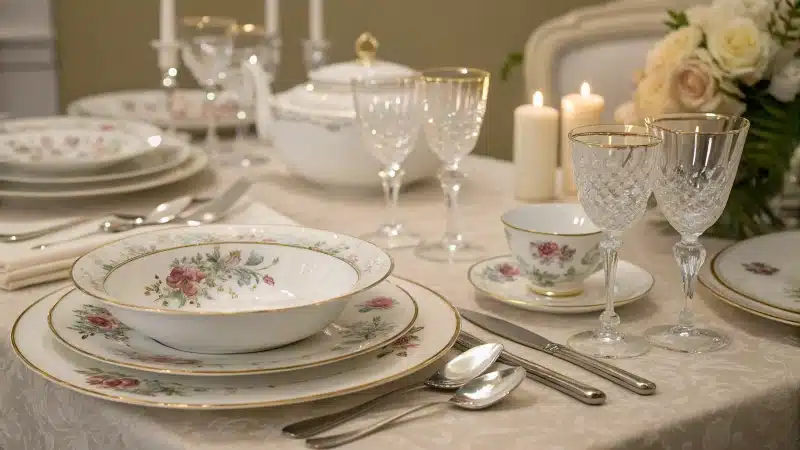
I remember the first time I held a bone china teacup, mesmerized by its delicate beauty and the soft clinking sound it made.
Bone china is generally less prone to chipping than other ceramics due to its unique composition, which includes bone ash, enhancing its strength and durability. However, it can still chip under significant impact or rapid temperature changes, making proper care essential.
Back in my early days at MTCeramic, I was often asked about the durability of bone china. It's a material that blends elegance with resilience, thanks to its unique composition. But like a cherished heirloom, it requires a gentle touch. Let's delve into what makes bone china special and how to keep it looking as pristine as the day you bought it.
Bone china is more prone to chipping than stoneware.False
Bone china is less prone to chipping due to its bone ash content.
Proper care reduces the risk of bone china chipping.True
Proper handling and avoiding rapid temperature changes help prevent chips.
What Makes Bone China Unique Compared to Porcelain?
Exploring the world of ceramics, bone china and porcelain stand out for their elegance and unique qualities. Let's dive into what truly sets them apart.
Bone china is distinguished by its inclusion of bone ash, which enhances its strength, whiteness, and translucency. This makes it more durable and aesthetically appealing compared to porcelain.
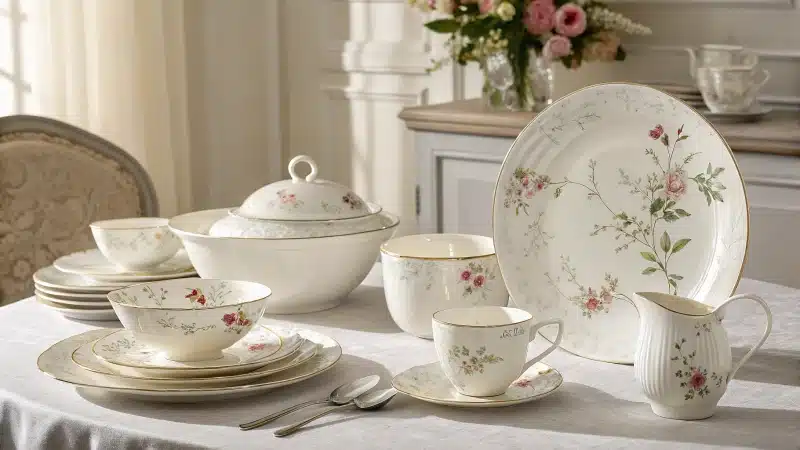
Composition and Strength
I remember the first time I held a piece of bone china—it was at a family dinner. The cup felt so light yet strong, almost like it had a story to tell. Bone china achieves this delightful balance through the addition of bone ash in its composition1, offering a robustness that porcelain just can't match. Porcelain, while elegant in its own right, tends to be heavier and more prone to chipping. It's amazing how that small difference in material can have such an impact on durability.
| Characteristic | Bone China | Porcelain |
|---|---|---|
| Main Ingredient | Bone ash, clay | Clay, kaolin |
| Durability | More resilient | Less resilient |
| Weight | Lighter | Heavier |
Aesthetic Qualities
Have you ever held a piece of bone china up to the light? It's mesmerizing. The translucency gives it a glow that feels almost magical. This is because of the high bone ash content, which also gives it a softer, opalescent white—quite different from porcelain's bright gloss. I always find myself drawn to that subtle elegance of bone china2.
Manufacturing Processes
The journey of crafting bone china is a labor of love. The manufacturing process3 involves multiple stages of firing at various temperatures, which elevates its quality and cost. Porcelain's simpler process makes it more budget-friendly, but there's something undeniably special about bone china's meticulous creation.
Price Considerations
Reflecting on the time I invested in choosing dinnerware for my home, the cost of bone china was initially daunting. However, I soon realized that its price reflects not just its elegance but also its lasting value. When I hold a bone china piece, I feel I'm holding a small piece of craftsmanship—a worthy investment that pays off in both beauty and durability.
Bone china is lighter than porcelain.True
Bone china's inclusion of bone ash makes it lighter than porcelain.
Porcelain has more bone ash than bone china.False
Bone china contains bone ash, while porcelain does not.
How Does Bone China Handle Everyday Use and Care?
Ever wondered if your delicate bone china can withstand the rigors of daily life? Let's dive into how to cherish and care for these elegant pieces.
Bone china is durable yet requires gentle handling to prevent chipping. Avoid sudden temperature changes and use soft cloths for cleaning. Store pieces with care to maintain their beauty and integrity.
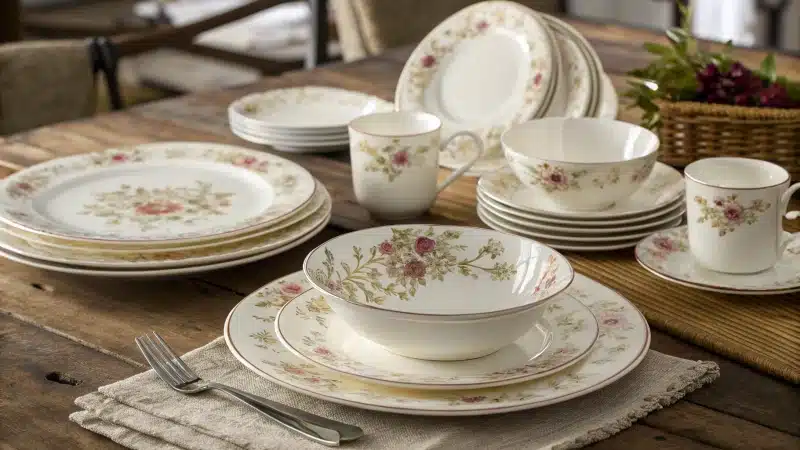
Understanding the Resilience of Bone China
I remember when I first held a piece of bone china—it was like holding a piece of history, fragile yet surprisingly sturdy. This unique blend of strength and elegance comes from its distinct composition4, which includes bone ash that adds both strength and translucency. Despite its toughness, I've learned that handling it with care is essential to avoid those heartbreaking chips or cracks.
Tips for Everyday Use
- Avoid Extreme Temperatures: I once made the mistake of moving a cup straight from the fridge into a hot oven, and let's just say it wasn't my finest moment. Bone china can crack under sudden temperature changes, so it's best to let it acclimate gradually.
- Gentle Cleaning: My go-to method is using a soft cloth or sponge with mild detergent. I steer clear of abrasive pads because I want to preserve that smooth, beautiful surface.
- Dishwasher Use: While many bone china pieces are dishwasher-safe, I prefer using the gentle cycle to keep them looking their best.
| Care Tip | Description |
|---|---|
| Avoid Stacking | To prevent chipping, avoid stacking cups and plates directly. Use felt pads. |
| Regular Checks | Inspect regularly for cracks or chips and repair promptly. |
Storage Solutions
Storing bone china properly is crucial. I use protective storage solutions5 like padded boxes or dividers to keep each piece separate. This way, I minimize the risk of accidental chips.
Comparing Bone China to Other Ceramics
In my experience, bone china stands out compared to porcelain and stoneware. It’s less likely to chip and offers a finer finish but demands more attentive care. Understanding these differences in composition6 has helped me adopt specific handling practices tailored to its properties.
By following these guidelines, I've managed to keep my bone china not only functional but as stunning as the day I first admired it. May your cherished pieces continue to grace your table for years to come.
Bone china is dishwasher-safe.True
Bone china can be safely washed in a dishwasher using a gentle cycle.
Bone china can handle rapid temperature changes.False
Rapid temperature changes can cause bone china to crack.
Are There Specific Conditions That Increase Chipping Risks in Bone China?
Bone china has a fascinating blend of elegance and durability, but what makes it vulnerable to chips?
Bone china can chip due to rapid temperature changes, improper handling, or exposure to abrasive materials. Ensuring gentle use, proper storage, and gradual heating or cooling can help minimize these risks.
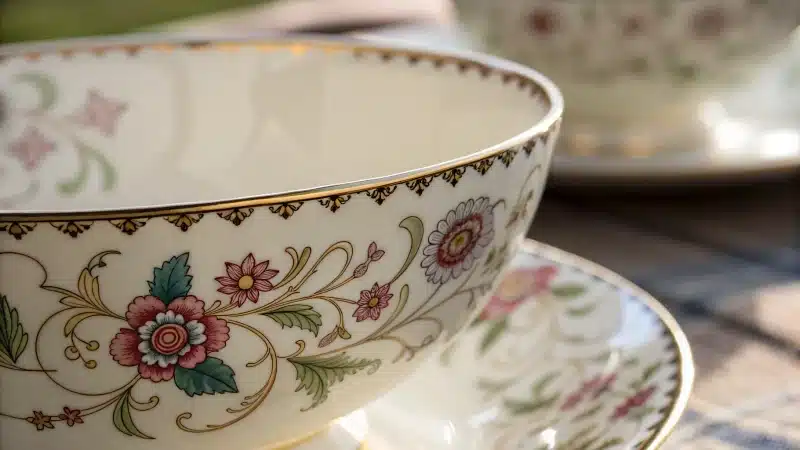
Temperature Fluctuations and Their Impact
Let me take you back to a winter evening when I was preparing a delightful dinner for my family. I had this beautiful bone china dish that I wanted to use. In my haste, I took it straight from the fridge and placed it into a preheated oven. The crack I heard was like the sound of a tiny heartbreak—my dish had chipped! It taught me a valuable lesson about thermal shock. Bone china, while robust, doesn’t fare well with sudden temperature swings. From that day, I made it a point to ensure my dishes were warmed gradually.
| Situation | Risk Level | Precaution |
|---|---|---|
| Dishwasher Use | Medium | Use delicate cycle, avoid harsh detergents |
| Microwave Heating | High | Avoid sudden temperature shifts |
| Oven Preheating | Very High | Preheat with dish inside |
Handling and Storage Practices
Handling bone china is like cradling a treasure—something I've learned through years of experience in the ceramic industry. Imagine this: you're stacking your prized collection after an evening tea party, and the slip of one saucer sends a ripple of dread through you. To avoid such mishaps, I've found that placing protective padding between dishes works wonders. And for my most treasured pieces, padded storage solutions offer peace of mind.
Consider using padded storage solutions for high-value items.
Abrasive Materials and Their Effects
There was this one time when I decided to give my bone china a thorough clean. In my enthusiasm, I reached for a scouring pad—a rookie mistake! The scratches left behind were a painful reminder to always use soft cloths and mild detergents. Even cutlery can wear down the glaze over time if not used with care. I've since lined my sink with a soft mat to cushion any accidents during washing.
Using abrasive cleaners or scouring pads can damage the surface of bone china, making it more susceptible to chips.
Environmental and Storage Conditions
Maintaining a stable environment for storing bone china is crucial. I recall visiting a friend whose beautiful collection had suffered due to fluctuating humidity levels in his home. It made me realize the importance of controlled conditions. Displaying these delicate items in cabinets with consistent climate conditions can prevent unnecessary stress on their structure.
Bone china should be stored in an environment where humidity and temperature remain consistent.
Fluctuations can cause materials to expand or contract, increasing stress on the structure.
Consider displaying items in cabinets with controlled conditions if possible.
Additionally, ensure storage areas are free from pests like silverfish that might damage the finish by leaving residue.
Taking these precautions has truly helped me preserve the beauty and integrity of my bone china collection, ensuring they remain in pristine condition for future generations to enjoy. For those interested in diving deeper into ceramic care, check out these tips on caring for ceramics7.
Rapid temperature changes increase chipping risk in bone china.True
Bone china is sensitive to abrupt temperature changes, causing thermal shock.
Using abrasive cleaners protects bone china from chipping.False
Abrasive cleaners damage the surface, making it more chip-prone.
How Can I Ensure My Bone China Lasts for Generations?
Ever marveled at the timeless elegance of bone china and wondered how to keep it looking that way? Let me share some personal insights and tips that will help preserve your precious pieces.
To maintain bone china durability, avoid exposing it to extreme temperatures, handle it with care during washing, and store it properly. Use gentle cleaning agents and avoid abrasive materials to prevent surface damage.
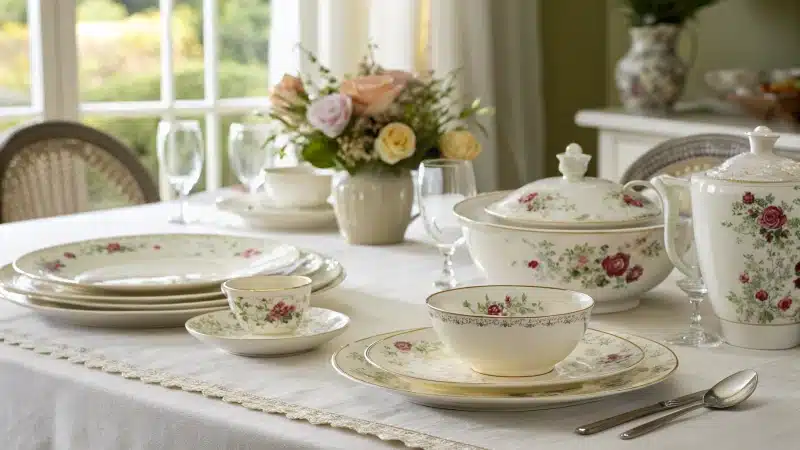
Understanding Bone China Composition
When I first started collecting bone china, I was fascinated by its delicate beauty and strength. Bone china consists of bone ash, feldspar, and kaolin, making it stronger than porcelain8. This unique composition enhances its translucency and strength but requires specific care to maintain these properties.
Tips for Handling and Washing
- Avoid Sudden Temperature Changes: I learned this lesson the hard way when a sudden temperature shift caused one of my favorite cups to crack. Always let bone china cool naturally after use.
- Gentle Cleaning: Use mild dish soap and warm water. I always reach for a soft cloth instead of harsh detergents or scouring pads that could scratch or dull the surface.
- Handwashing Over Dishwasher: Although some bone china is dishwasher safe, handwashing prolongs its lifespan. If you must use a dishwasher, select a gentle cycle and make sure the pieces do not touch.
Storing Your Bone China
My grandmother used to stack plates with cloth separators—a tradition I continue today—to prevent scratches. Here are some tips:
- Use Padding: Stack plates with cloth or paper separators.
- Avoid High Shelves: Store heavier pieces lower to prevent falls.
- Display Carefully: If showcasing, use secure holders that don't apply pressure to the rims.
| Storage Tips | Description |
|---|---|
| Use Soft Linings | Protects surfaces from scratches |
| Secure Holders for Display | Prevents accidental topples and breakages |
| Lower Shelf Storage | Reduces risk of damage from falling |
Addressing Common Issues
- Chipping: Even with careful handling, chips can occur. For valuable items, I recommend professional restoration.
- Staining: To remove stains, I gently apply a baking soda paste with a soft cloth.
Incorporating Longevity Practices
For enthusiasts like Mike Tang, founder of MTCeramic, maintaining durability ensures the long-term value of your collection. Educating clients on these best practices9 enhances customer satisfaction and product longevity.
Understanding these principles can transform how we appreciate and care for bone china, ensuring each piece remains a treasured part of our lives for generations to come.
Bone china is stronger than porcelain.True
Bone china's composition includes bone ash, making it more durable.
Using a dishwasher is safer for bone china than handwashing.False
Handwashing is gentler and prolongs the lifespan of bone china.
Conclusion
Bone china is less prone to chipping than other ceramics due to its bone ash composition, but requires careful handling and temperature management to maintain its durability.
-
Explore the detailed composition of bone china, highlighting how each ingredient contributes to its unique properties. ↩
-
Discover why bone china’s translucency sets it apart from porcelain, enhancing its aesthetic appeal. ↩
-
Learn about the intricate manufacturing processes that give bone china its superior qualities. ↩
-
Learn about the composition of bone china to understand why it’s durable yet delicate. ↩
-
Discover effective storage options to prevent damage and maintain your bone china’s beauty. ↩
-
Explore how bone china differs from porcelain in terms of durability and care. ↩
-
Understanding ceramic care can extend the life of your items; this link shares valuable insights. ↩
-
This link explains the composition differences that impact durability. ↩
-
Explore practical storage solutions to enhance bone china longevity. ↩
